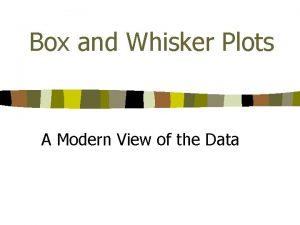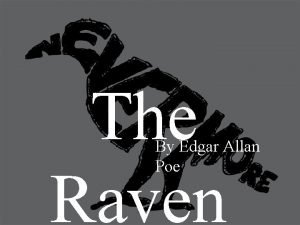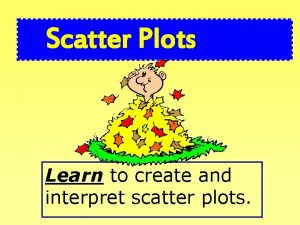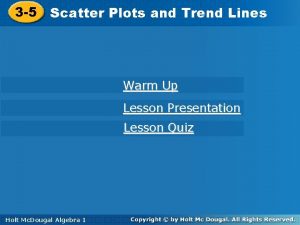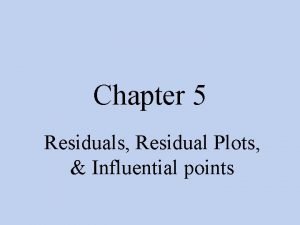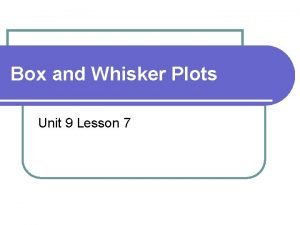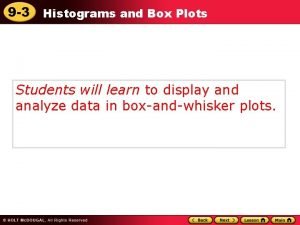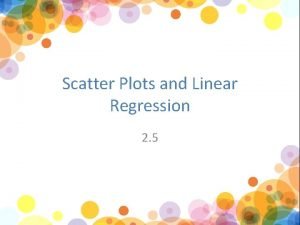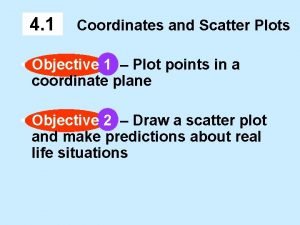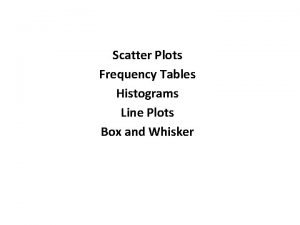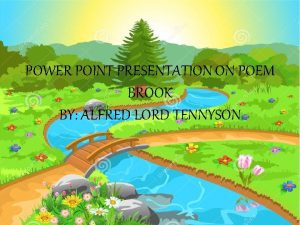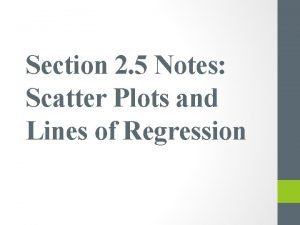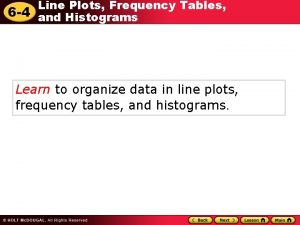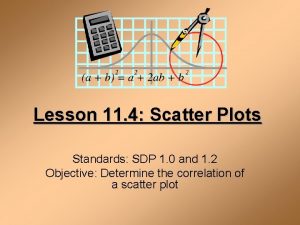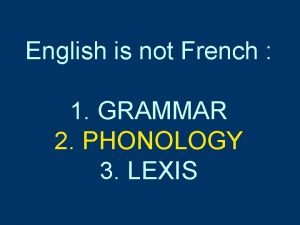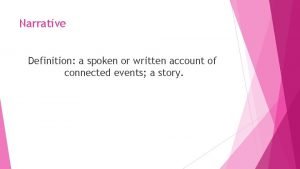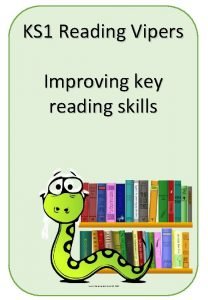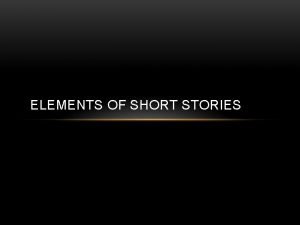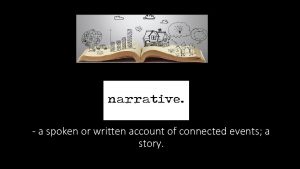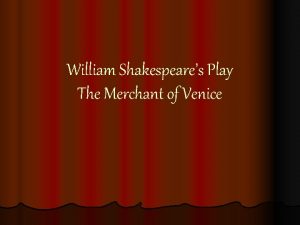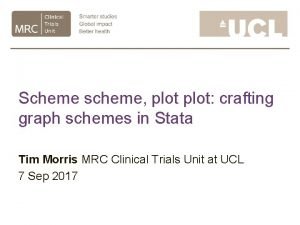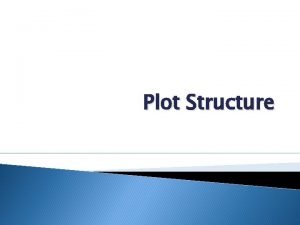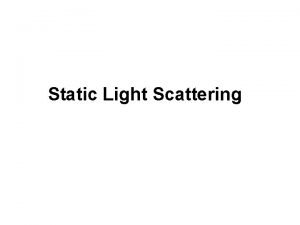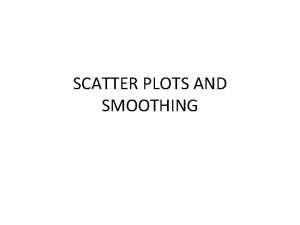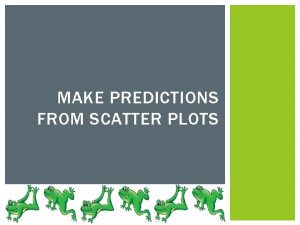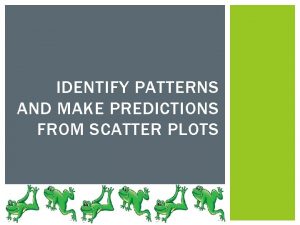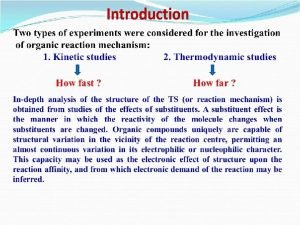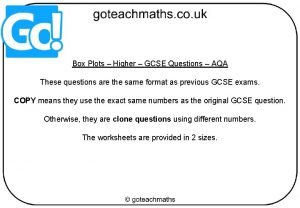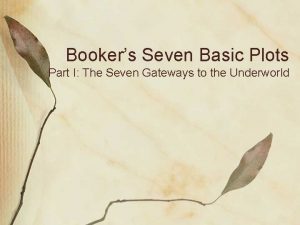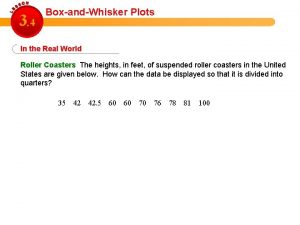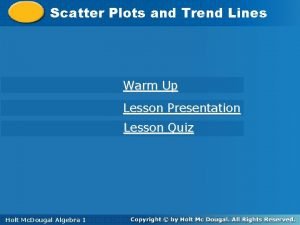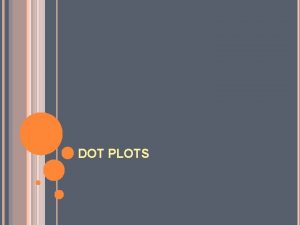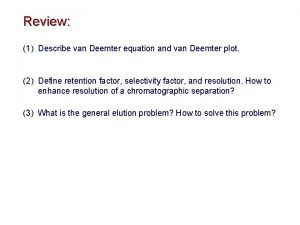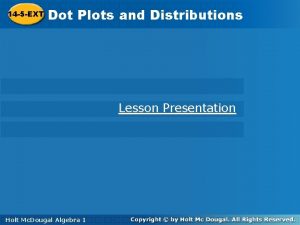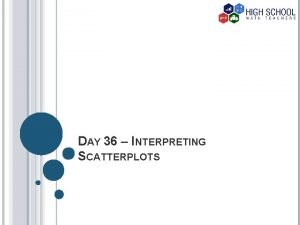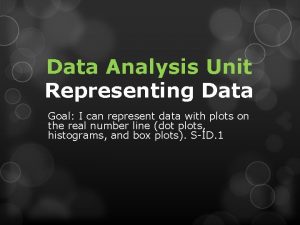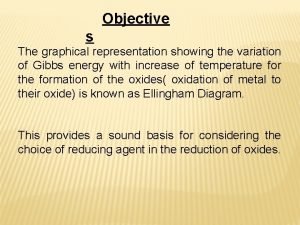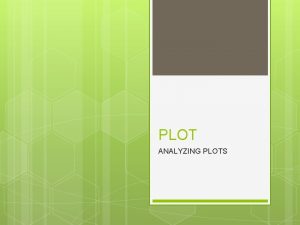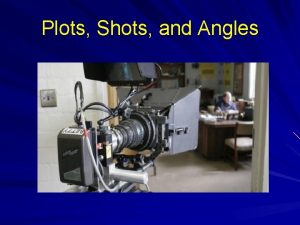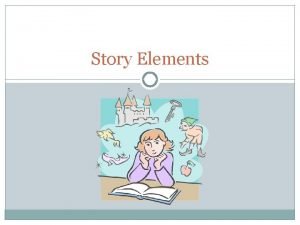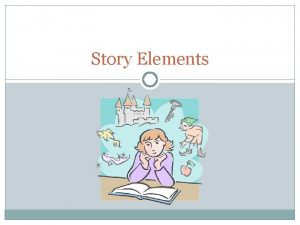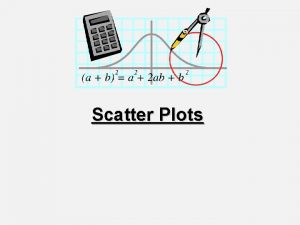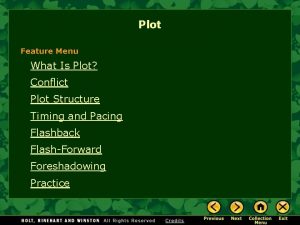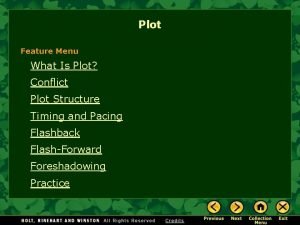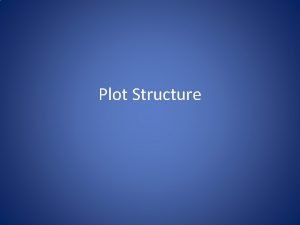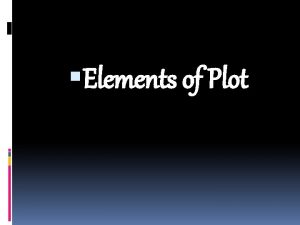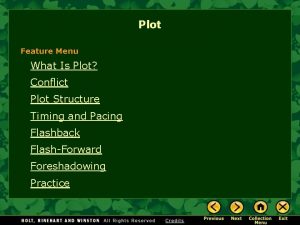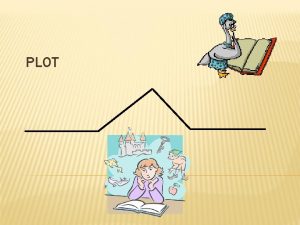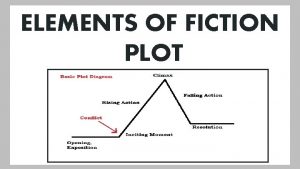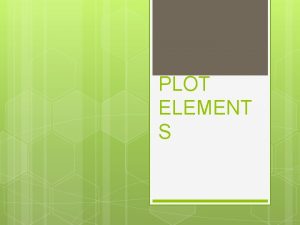Plots and Emplotment Story and plot Storythe events
























































- Slides: 56

Plots and Emplotment

Story and plot • Story—the events and actions occurring over time, relating to characters • Plot—the actions, events, effects as presented within the narrative – may be out of sequence, may not include important parts of the story, etc.

Plots and emplotment • Plots are the sets of events presented within the narrative that drive the story forward • Events may be actions taken by characters or may be ‘natural’ events that occur within the story world that affect the characters (storm, volcano, economic crash) • Events are linked, usually in a causal chain

Plot structure • Plots range from very simple to extremely complex (“imbroglio”) • Many narratives have a number of subplots tied to the overall main or superordinate plot – Conclusion of a subplot will often move the character(s) forward in the overarching main plot

You can think of characters traveling a road from a beginning to some end – Some source of disturbance sets the characters on their journey – The journey occurs over time and in some context – Things that happen early determine those that happen later – There are complications along the way that usually become more demanding as characters approach their goal – A major conflict occurs, is resolved and events flow toward resolution of the original

Events Kernels and Satellites (Porter, Larson, Harthcock & Nellis) (1) Kernels (Hubs): Major events or branching points in the plot structure that force characters to choose between or among alternate paths (2) Satellites: Minor plot events that add texture and complexity to characters and elements but are not essential elements

Events • Events may be actions taken by characters or may be ‘natural’ events that occur within the story world that affect the characters (storm, volcano, economic crash) • The events are portrayed as causal—one thing leads to another • The plot may not present these events chronologically – Flashbacks and flashforwards

Conflict • Plots are driven by conflict – Protagonist v. antagonist • Harry Potter – Humans against nature • Jurassic Park – Humans fighting themselves (internal demons) • Dexter – Humans against the supernatural • Supernatural – And so on

Motive • Conflict is based on the motive of the protagonist – Seeking something – Often generated through actions of the antagonist or by changes in circumstance – Sharpest conflict is generated by incompatible motives among main characters • Antagonist has a motive that directly opposes that of the protagonist • Multiple protagonists with incompatible motives – It’s a Mad Mad World

Causal chain • Many real-life events cannot be explained as the consequence of some earlier action (occur by chance, fortune), but in narrative most events are clearly linked to earlier events or actions – “If it had not been for X, Y wouldn’t have happened”

Aristotle’s Elements of Plot • • • Reversals Discoveries Complications Catastrophe Resolution

Variation by medium • Film – The plot unfolds in a rather gradual, upward spiral with varying amounts of ups and downs depending on the particular story – Comes to a close at the end of the movie • Television – The plot unfolds in pulses with highpoints immediately preceding commercials and minor conclusions to each pulse following the break – The end of the episode may not lead to a conclusion of the plot or may only answer a single subplot • The Amazing Race

TV Narrative is open-ended. Many episodes are used to tell a story. These stories unfold in a “story world, ” a setting or situation in which the characters live. The Story World of the Series (Plot A) 1 3 2 The individual episode The Story World establishes a context in which weekly or daily episodes unfold. The overall plot of the series moves slowly. This is considered Plot A. 4 Each episode has its own storyline. This is often called Plot B. In some instances there are multiple plots (B, C, D) in each episode— Friends, Seinfeld, for example.

Stories are also tied together by “dangling causes. ” • Dangling causes are based on our understanding of cause/effect relationships. • We know that an event (a cause) will result in some effect. • In television we often see a cause but the effect is withheld and we will not know the result until a future episode.

Dangling Causes The Story World 1 2 • Causes lead to effects that become causes for other effects. BUT these cause / effect relationships may stretch across episodes or even seasons! Causes which do not result in an immediate effect are called dangling causes. • Dangling causes are used to sustain viewer/reader interest and to create tension.

Genre • The standard plots of various genres are wellknown • When working within a genre, deviating too significantly from the classic plot will often lead to dissatisfaction among the dedicated audience • However, too strict an adherence to the traditional plot for a given genre leads to audience disinterest – Some amount of creativity is appreciated

Detective story • Client comes to detective, asks for help • Detective takes case, is opposed by antagonist/criminal • Detective investigates, meets and overcomes obstacles, solves crime • Antagonist is killed/goes to jail • If client was female, may end up with detective – Gender reversal is rare

A good plot • Is based on significant conflict

A good plot • Holds together—it doesn’t seem implausible – No major ‘plot holes’ – What is acceptable depends upon the genre • In a fantasy, you can present actions and events that are consistent with the plot that would be inappropriate to other genres – Stardust

Plot holes • “A plot hole, or plothole, is a gap or inconsistency in a storyline that goes against the flow of logic established by the story's plot, or constitutes a blatant omission of relevant information regarding the plot. These include such things as unlikely behaviour or actions of characters, illogical or impossible events, events happening for no apparent reason, or statements/events that contradict earlier events in the storyline. ” – Wikipedia

• Plot holes are identified by dedicated fans and published online – http: //www. moviemistakes. com/best_plothole. php – http: //tvtropes. org/pmwiki. php/Main/Pl ot. Hole

A good plot • Draws upon feelings/experiences the audience members bring to the text – Chariots of Fire

A good plot • Is consistent with the characterization – In TV series, for example, the characters have established a personality that the audience understands and expects to be consistent • Acting out of character could be considered a form of implausibility

A good plot • Alternates action and rest/thought, etc. – Though the general trend is toward more intense action and quickened pacing, the inclusion of subplots, minor conflicts, etc. keep the audience interested as the story progresses

A good plot • Does not answer the ‘enigma’ too quickly – The audience member should not be certain of how things are going to turn out until after the climax – While some narratives begin with the conclusion, there is still some question as to how things led to that particular outcome • American Beauty

A good plot • Is neither so simple that audience members know what will happen far in advance nor so complicated that the audience cannot follow the logic – Audience members should be able to make plausible predictions for most, but not all, events/actions/effects

Audience reactions that enhance enjoyment • Suspense • Effects of an action/event must not be revealed too quickly • Surprise • Audience members must not be able to predict all events and their outcomes – Plot twists

A good plot • Leads to an appropriate conclusion – Most endings are “happy” – Unhappy endings usually come from behavior that is immoral or stupid • Hero’s ‘tragic flaw’

Zillman’s model

Master Plots • Well-known skeleton stories that can serve as the basic plot for a wide range of characters and circumstances – “Cinderella story”

Master plots (Tobias’s list) • • • Quest Adventure Pursuit Rescue Escape The Riddle Rivalry Underdog Temptation Metamorphosis • • • Transformation Maturation Love Forbidden Love Sacrifice Discovery Wretched Excess Vengeance Ascension Descension

Plot Devices • “A plot device is an element introduced into a story solely to advance or resolve the plot of the story. ” • Wikipedia – Skill in use is crucial to audience reaction to plot devices

Instrument to make the implausible

Plot devices • A Mac. Guffin is an object (or character) which drives the actions of the characters, but whose actual nature is not important to the story; another object would work just as well, if the characters treated it with the same importance. – Hitchcock said that “in a thriller the Mac. Guffin is usually ‘the necklace’; in a spy story it is ‘the papers’”. • Mac. Guffins are frequently found in ‘quest’ fantasy stories; video games

The Statue in The Maltese Falcon

Nick Lowe’s list of plot devices • Collect-the-Coupons plotting. Because having a small group of protagonists overcome an army of villains would be too implausible, “what you do instead is write into the scenario one or more Plot Coupons which happen to be "supernaturally" linked to the outcome of the larger action; and then all your character have to do is save up the tokens till it's time to cash them in. ”

Dragonballs

Plot voucher (Nick Lowe) • The object, typically given to the protagonist shortly before, that allows them to escape from a situation that would be otherwise impossible. • The protagonist needs to “save the voucher and cash it in at the appropriate time. ” – Most of the devices given to James Bond by Q could fall into this category.


• Other plot devices are simply one-offs to get the protagonist to the next scene of the story. The enemy spy, who suddenly appears, defects, reveals the location of the secret headquarters and is never heard of again, would be an extreme example.

• Many video games rely heavily on plot devices; games often require characters to perform arbitrary tasks in order to ‘win’ the game.

Universal Plot Generator • A Plot Generator is a device written into your scenario that will create further stories as often as required, while laying no restrictions whatever on the kind of story produced. – Red Kryptonite – The Time Tunnel – Stargate



Deathtrap • An overly complicated method of killing a character, used solely to provide a means of escape – James Bond – Superheros • Batman (TV show)


Deus ex machina • The phrase has been extended to refer to any resolution to a story that does not pay due regard to the story's internal logic and is so unlikely that it challenges suspension of disbelief, allowing the author to conclude the story with an unlikely, though more palatable, ending. • Turns out to be a dream

• A related and common example is the tendency for the cops, etc. to arrive just in the nick of time to save a victim being tortured and about to be killed


Quest • A complicated search for capture or return of some object or person – Hero myth

Quibble • Following the exact terms of an agreement to escape what would normally be expected – Legal bargains – Agreements in fantasy stories • Pacts with the devil • Clever and unusual quibbles startle and please readers, but clumsily contrived ones can seem artificial ways to escape a fictional problem.



Red Herring John Paul Mc. Carty Musings and Mutterings


IGN Playstation Team’s “Top 10 Overused Plot Devices” • • • Secret organizations plotting conspiracies, possibly relating to world domination Uncovering lost remnant of something Fulfilling a prophecy Killing the aliens Unlocking one’s hidden true powers, a. k. a. the chosen one Accidentally unleashing a terrible evil Must seek revenge World War II Main character with amnesia World ending
 Mutually exclusive events vs not mutually exclusive events
Mutually exclusive events vs not mutually exclusive events Disadvantage of box and whisker plot
Disadvantage of box and whisker plot What is a plot sequence
What is a plot sequence The raven exposition
The raven exposition The lion and the mouse climax
The lion and the mouse climax Unit scatter plots and data quiz 1
Unit scatter plots and data quiz 1 Quiz scatter plots and trend lines
Quiz scatter plots and trend lines Cumulative frequency and box plots
Cumulative frequency and box plots Creating box plots calculator
Creating box plots calculator Compare center and spread of data displayed in box plots
Compare center and spread of data displayed in box plots Section 10 topic 5 residuals and residual plots
Section 10 topic 5 residuals and residual plots Box and whisker plot
Box and whisker plot Box and whisker plot worksheet doc
Box and whisker plot worksheet doc Lesson 9-3 histograms and box plots
Lesson 9-3 histograms and box plots Scatter plots and trend lines worksheet
Scatter plots and trend lines worksheet 2-5 scatter plots and lines of regression
2-5 scatter plots and lines of regression 4-1 construct and interpret scatter plot
4-1 construct and interpret scatter plot Scatter box plot
Scatter box plot By thirty hills i hurry down
By thirty hills i hurry down 2-5 scatter plots and lines of regression
2-5 scatter plots and lines of regression Drawing cumulative frequency graphs worksheet
Drawing cumulative frequency graphs worksheet Frequency tables and histograms 14-5
Frequency tables and histograms 14-5 Scatter plots and data student handout 4
Scatter plots and data student handout 4 Paul et henri font du karaté. correct incorrect
Paul et henri font du karaté. correct incorrect Dr frost
Dr frost Positive scatter plot
Positive scatter plot Narrative account definition
Narrative account definition Vipers literacy shed
Vipers literacy shed Story arrangement
Story arrangement Is a spoken or written account of connected events.
Is a spoken or written account of connected events. What is key events in a story
What is key events in a story The merchant of venice exposition
The merchant of venice exposition Merchant of venice short story
Merchant of venice short story Stata graph schemes download
Stata graph schemes download Falling action of orpheus
Falling action of orpheus How to plot zimm plot in excel
How to plot zimm plot in excel Car smoothing
Car smoothing Scatter plot matching activity
Scatter plot matching activity Make predictions with scatter plots
Make predictions with scatter plots Scatter plot patterns
Scatter plot patterns Hammet plots
Hammet plots 100 men and 100 women took a test
100 men and 100 women took a test Booker's seven basic plots
Booker's seven basic plots Box plot real life example
Box plot real life example Merchant of venice plot structure
Merchant of venice plot structure Describing trends in scatter plots
Describing trends in scatter plots Data display definition
Data display definition Biological materials science
Biological materials science Van deemter equation formula
Van deemter equation formula What is nonlinear plot
What is nonlinear plot Greg hoch
Greg hoch Uniform dot plot
Uniform dot plot Scatter plot interpretation
Scatter plot interpretation Advantages of dot plots
Advantages of dot plots Draw a correlation
Draw a correlation Salient features of ellingham diagram
Salient features of ellingham diagram Open handed map awarding the world its world
Open handed map awarding the world its world

